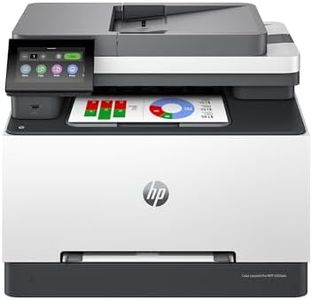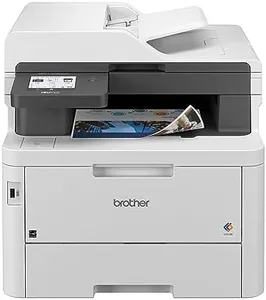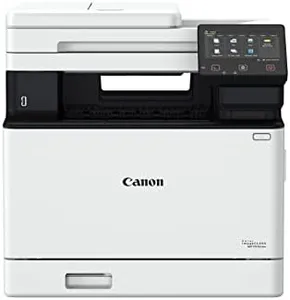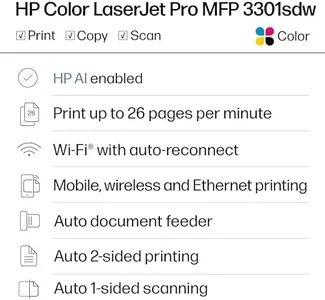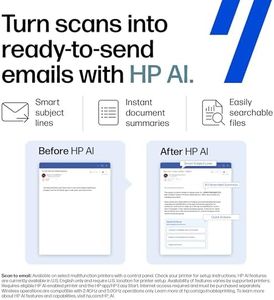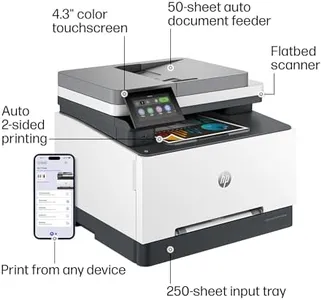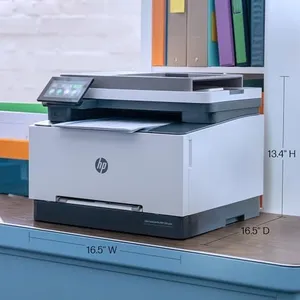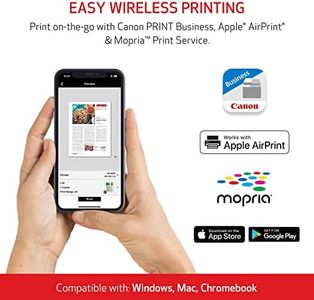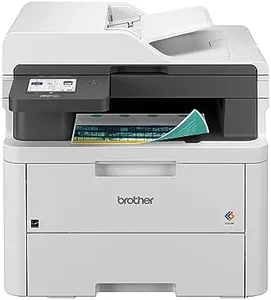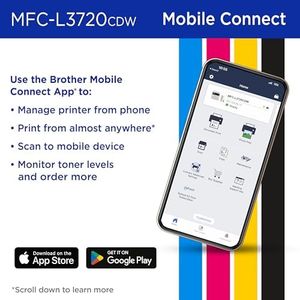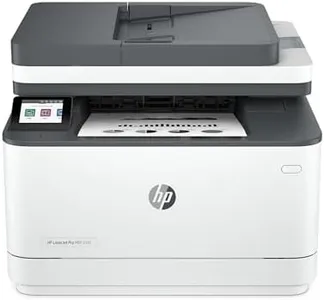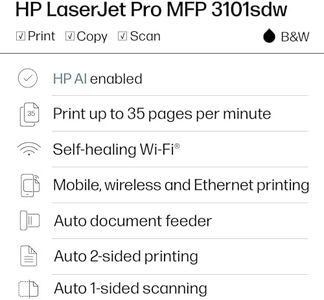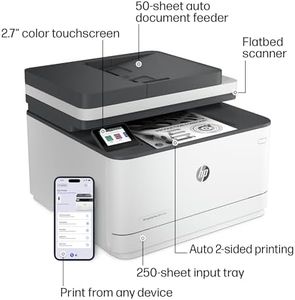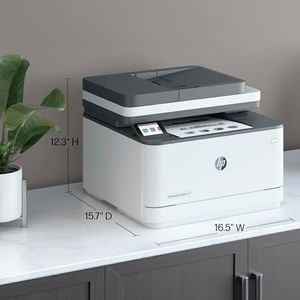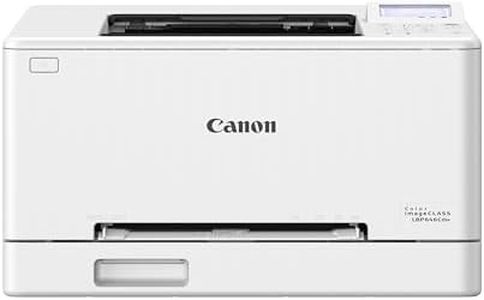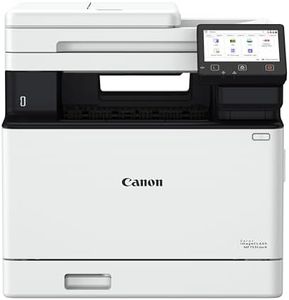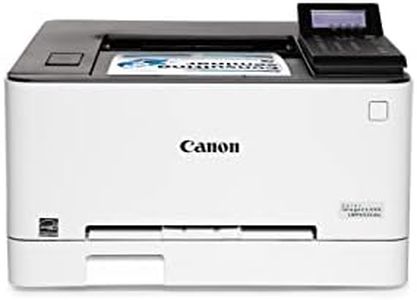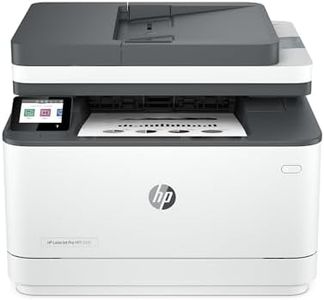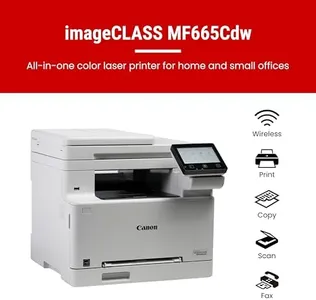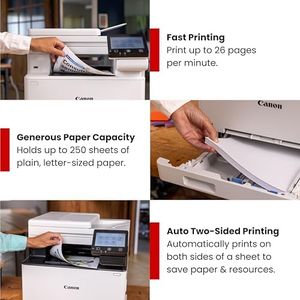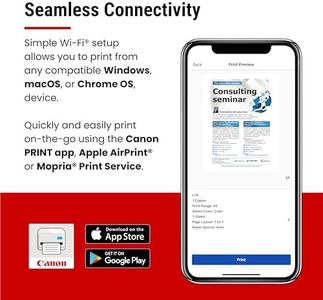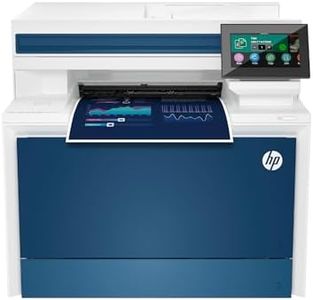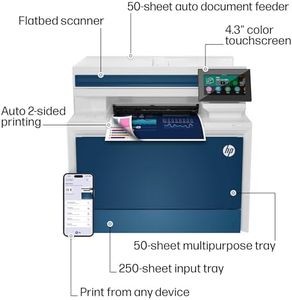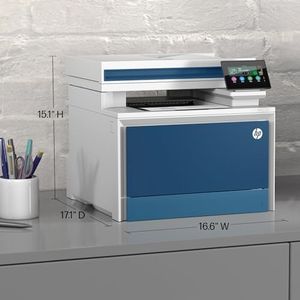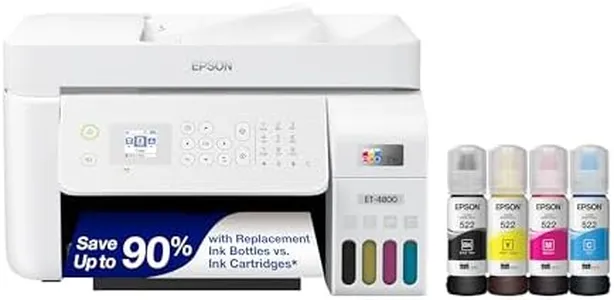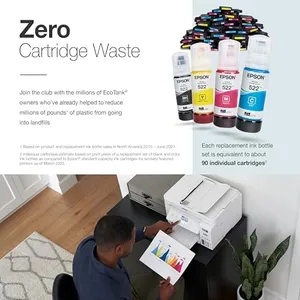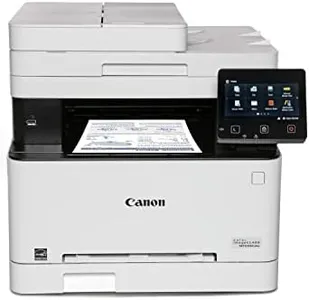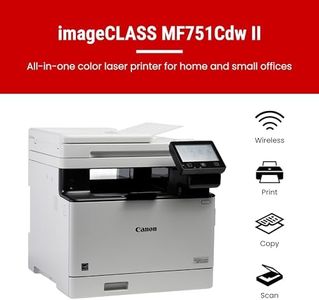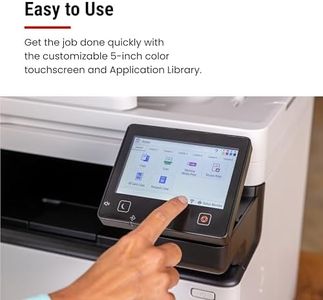10 Best Color Laser Printers 2025 in the United States
Winner
HP Color LaserJet Pro MFP 3301sdw Wireless All-in-One Color Laser Printer, Office Printer, Scanner, Copier, ADF, Duplex, Best-for-Office (499Q3F)
The HP Color Laserjet Pro MFP 3301sdw is designed for small teams looking for a reliable all-in-one color laser printer that excels in both print quality and speed. One of its standout features is the impressive print speed of up to 26 pages per minute for both black and color documents, making it suitable for busy office environments where time is of the essence. The printer utilizes advanced TerraJet toner, known for producing vibrant colors and sharp prints, which is beneficial for creating professional-quality documents and reports.
Most important from
746 reviews
Brother MFC-L3780CDW Wireless Digital Color All-in-One Printer with Laser Quality Output, Single Pass Duplex Copy & Scan | Includes 2 Month Refresh Subscription Trial, Works with Alexa
The Brother MFC-L3780CDW is a solid choice for small businesses and offices, thanks to its comprehensive all-in-one functionality. It excels in print speed, offering up to 31 pages per minute in both monochrome and color, which is quite impressive for enhancing productivity. The print quality is high, with a maximum resolution of 2400 x 600 dpi, ensuring sharp and vibrant documents. Connectivity options are robust, including dual-band wireless, Gigabit Ethernet, Wi-Fi Direct, USB, and NFC, making it versatile for various office setups.
Most important from
602 reviews
Canon imageCLASS MF753Cdw - Wireless Duplex Color Laser Printer, All-In-One with Scanner, Copier, Fax, Auto Document Feeder, Mobile Ready, 3 Year Limited Warranty, 35 PPM, White
The Canon Color imageCLASS MF753Cdw is a versatile all-in-one laser printer, ideal for small to medium-sized offices. It offers robust performance with a fast print speed of up to 35 pages per minute for both color and black-and-white prints. The quick first print time of approximately 7 seconds ensures minimal waiting for urgent documents. With a standard 250-sheet cassette, a 50-sheet multipurpose tray, and an optional expansion to 850 sheets, it is well-suited for high-volume printing needs.
Most important from
574 reviews
Top 10 Best Color Laser Printers 2025 in the United States
Winner
HP Color LaserJet Pro MFP 3301sdw Wireless All-in-One Color Laser Printer, Office Printer, Scanner, Copier, ADF, Duplex, Best-for-Office (499Q3F)
HP Color LaserJet Pro MFP 3301sdw Wireless All-in-One Color Laser Printer, Office Printer, Scanner, Copier, ADF, Duplex, Best-for-Office (499Q3F)
Chosen by 1261 this week
Brother MFC-L3780CDW Wireless Digital Color All-in-One Printer with Laser Quality Output, Single Pass Duplex Copy & Scan | Includes 2 Month Refresh Subscription Trial, Works with Alexa
Brother MFC-L3780CDW Wireless Digital Color All-in-One Printer with Laser Quality Output, Single Pass Duplex Copy & Scan | Includes 2 Month Refresh Subscription Trial, Works with Alexa
Canon imageCLASS MF753Cdw - Wireless Duplex Color Laser Printer, All-In-One with Scanner, Copier, Fax, Auto Document Feeder, Mobile Ready, 3 Year Limited Warranty, 35 PPM, White
Canon imageCLASS MF753Cdw - Wireless Duplex Color Laser Printer, All-In-One with Scanner, Copier, Fax, Auto Document Feeder, Mobile Ready, 3 Year Limited Warranty, 35 PPM, White
Brother MFC-L3720CDW Wireless Color Laser Printer with Scanner, Copier and Fax | Auto Duplex and 250-Sheet Capacity | Includes Refresh Subscription Trial(1). Amazon Dash Replenishment Ready
Brother MFC-L3720CDW Wireless Color Laser Printer with Scanner, Copier and Fax | Auto Duplex and 250-Sheet Capacity | Includes Refresh Subscription Trial(1). Amazon Dash Replenishment Ready
HP LaserJet Pro MFP 3101sdw Wireless All-in-One Laser Printer, Office Printer, Duplex, Best-for-Small Teams (9D2X4F)
HP LaserJet Pro MFP 3101sdw Wireless All-in-One Laser Printer, Office Printer, Duplex, Best-for-Small Teams (9D2X4F)
Canon Color imageCLASS MF665Cdw - Wireless Duplex Laser Printer, All-in-One with Copier, Scanner, Fax, Auto Document Feeder, 3 Year Limited Warranty, 22 PPM
Canon Color imageCLASS MF665Cdw - Wireless Duplex Laser Printer, All-in-One with Copier, Scanner, Fax, Auto Document Feeder, 3 Year Limited Warranty, 22 PPM
HP Color Laserjet Pro MFP 4301fdw Wireless All-in-One Color Laser Printer, Scanner, Copier, Fax, Best-for-Office
HP Color Laserjet Pro MFP 4301fdw Wireless All-in-One Color Laser Printer, Scanner, Copier, Fax, Best-for-Office
Epson EcoTank ET-4800 Wireless All-in-One Cartridge-Free Supertank Printer with Scanner, Copier, Fax, ADF and Ethernet – Ideal-for Your Home Office, White
Epson EcoTank ET-4800 Wireless All-in-One Cartridge-Free Supertank Printer with Scanner, Copier, Fax, ADF and Ethernet – Ideal-for Your Home Office, White
Canon imageCLASS MF656Cdw - Wireless Duplex Color Laser Printer, All-in-One with Copier, Scanner, Fax, Auto Document Feeder, Mobile Ready, 3 Year Limited Warranty, 22 PPM, White
Canon imageCLASS MF656Cdw - Wireless Duplex Color Laser Printer, All-in-One with Copier, Scanner, Fax, Auto Document Feeder, Mobile Ready, 3 Year Limited Warranty, 22 PPM, White
Canon Color imageCLASS MF751Cdw II - Wireless Duplex Laser Printer, Multifunction with Copier, Scanner, Automatic Document Feeder, 3 Year Limited Warranty, 35 PPM
Canon Color imageCLASS MF751Cdw II - Wireless Duplex Laser Printer, Multifunction with Copier, Scanner, Automatic Document Feeder, 3 Year Limited Warranty, 35 PPM
Our technology thoroughly searches through the online shopping world, reviewing hundreds of sites. We then process and analyze this information, updating in real-time to bring you the latest top-rated products. This way, you always get the best and most current options available.

